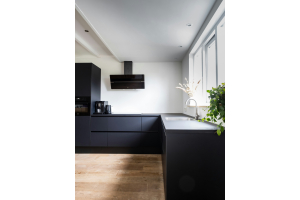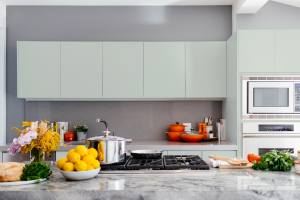Wooden slatwall panels are growing in popularity throughout the United States. Not only are they beautiful, warm additions to the home, but they have an ever-increasing range of stunning, classic and contemporary designs available.
Slatwall is a wall-mounted panel system with horizontal grooves (slats) running from top to bottom or left to right. The slats are evenly spaced and designed to accommodate different accessories such as shelves, hooks, and pegs. These panels are available in various materials, with wood being the most popular slatwall material for homes because it’s both beautiful and easy to work with.
Wooden slatwall panels are also popular because of their functionality: they provide a space to place shelves, hooks and pegs, to hang and display items, and more! With this in mind, it’s important that slatwall is sturdy and strong.
How Much Weight Can Slatwall Hold?
Slatwall is a sturdy wall material and can hold a significant amount of weight, provided you know how to install a wood slatwall correctly. Furthermore, there are other factors that play a part in determining the holding strength of slatwall. Let’s explore the factors that can impact the strength of your slatwall:
Materials Used and Quality of Installation
Slatwall can be made from different materials, including wood, metal, polyvinyl chloride (PVC), and medium-density fibreboard (MDF). Each material differs in strength and ability to hold weight.
Generally, wood slatwall is the most preferred material for homes because it is elegant and durable. Metal slatwall panels are also strong and sturdy, but they are heavier and more expensive. PVC and MDF slatwall panels are the most affordable options, but are not as strong as wood or metal slatwall.
Slat Thickness
The thickness of the slats will determine how much weight they can hold. The thickness of slatwall generally ranges from 0.75 inches to two inches. The thicker the slat is, the more weight it can hold.
A 0.75-inch slat can hold about twenty-five to fifty pounds of weight, while a 1.5-inch slat can hold up to one hundred pounds. A certified provider of slatwall will know how to make slatwall panels suitable for weight bearing purposes.
Spacing Between Grooves
The spacing between slats also affects the amount of weight slatwall can hold. The closer the grooves are, the more weight the slatwall can hold because it provides more support.
The typical spacing between slats is three inches, four inches, or six inches. If you plan to hang heavy items, choose a slatwall option with a closer slat spacing.
Weight Bearing Components
The accessories you choose to support the hanging weight will determine how much weight can be supported by your slatwall. Usually, slatwall is complemented by hooks, brackets, or shelves to support weight-bearing functionality.
Hooks and brackets are ideal for light or medium-weight items, while shelves are ideal for heavier items. When choosing any weight-bearing component, verify that it passes all regulatory checks and is made of sturdy material so it can support the item you plan to hang.
The Takeaway
Slatwall is a fantastic choice if you want an elegant and warm decor component that serves a functional purpose. Choose sensible components and install high quality, thick slats with minimal spacing so they increase their weight-bearing capacity.
For any questions or queries regarding your slatwall installation, don’t hesitate to contact the team at 27estore!






